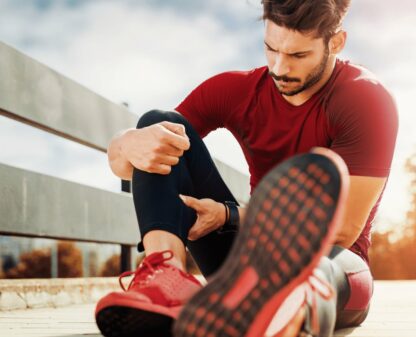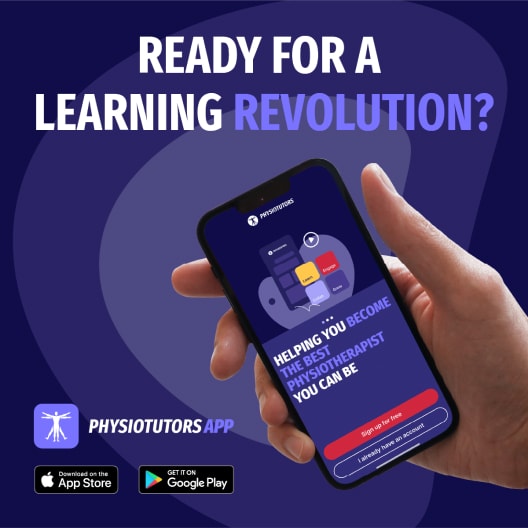Where to Start - Exercise Progression to Incrementally Load the Achilles Tendon

Introduction
Many tendon conditions arise because of chronic tendon underloading or overloading. In rehabilitation, the key is to carefully adjust loads to the tissue tolerance of the tendon in particular. Progressively, these loads should be increased to increase the load capacity of the tendon to match people’s desired level of activities and the amount of loading needed to complete these activities. For Achilles tendon problems, many of us were taught to prescribe heel raises as the main part of an effective exercise program. However, these heel raises may be not sufficient to increase tissue tolerance over time. For example, because running can put as much as 12 times one’s body weight on the Achilles tendon, the rehabilitation of someone with Achilles tendon problems who wants to return to running must meet this requirement. To quantify the loads that are exerted on the Achilles tendon, it should be examined first. Therefore, this study examined the loads exerted on the Achilles tendon and how to incrementally load the Achilles tendon.
Methods
To determine how to start an exercise program and progress to incrementally load the Achilles tendon, the study recruited eight healthy adults. They had no evidence of Achilles tendon problems or tendon pain.
These participants were given standard exercise clothing and running shoes and were set up with retroreflective markers over anatomical landmarks on the pelvis, upper torso, and legs. They completed 25 exercises commonly used in daily life or physiotherapy rehabilitation.
- seated single-legged heel raise with 15 kg placed on the thigh,
- single-leg and double-leg heel raise at both comfortable and fast speed,
- single-leg and double-leg hopping,
- single-leg and double-leg drop jumps
- countermovement jumps,
- lunges,
- squats,
- step-ups and step-downs from a low box (12 cm) and a high box (20 cm)
After exercise completion, the participants walked and ran over force plates at their preferred speeds.
The Achilles tendon load was derived from the plantarflexion moment calculated with inverse dynamic analysis divided by the moment arm of 5cm. The participant’s weight was used to normalize the tendon load to their respective body mass. Three different loading variables were measured to quantify the loads on the patellofemoral joint:
- Loading peak: which is the maximum load during each repetition
- Loading impulse: the cumulative loading over time
- Loading rate: the maximum change of load over time over a 5% moving window

The mean of these three variables was used to calculate the loading index, which varies between 0 and 1 with 0 representing no load and 1 representing an exercise that would have a maximal loading peak and impulse.
The exercises were ranked into 4 tiers:
- Tier 1 were exercises with a loading index below 0.25
- Tier 2 reflected a loading index between 0.25 and 0.50
- Tier 3 consisted of exercises with a loading index between 0.5 and 0.75
- Tier 4 exercises were exercises with loads exceeding 0.75
Results
Most of the exercises were classified as tier 1 and 2 exercises.

Exercises that gave the most load on the Achilles tendon were classified in tier 4 and comprised the following:
- Single-leg hopping
- Single-leg drop jump
- Single-leg lateral hopping
- Single-leg forward hopping
In the following video, we covered all the exercises that were studied and ranked into the 4 tiers.
Questions and thoughts
This study provides us with tools to personalize the rehabilitation of someone with Achilles tendinopathy. You shouldn’t give everyone seated and standing heel raises at first. The information from this study can be used to tailor your exercise approach. For example:
- When someone complains about pain with walking, which was found to be a tier 2 exercise, you could lower the demands by performing tier 1 exercises at first.
- Running was a tier 3 exercise and as such, when an exercise of tier 4 can be performed, it seems possible to re-introduce running.
It was found that the transition of slow multi-joint movements to dynamic single-leg movements incrementally load the Achilles tendon. As such, we should step away from only performing heel raises (also called calf-raises) to more demanding and varied exercises. As you can see in the image below, walking and running (red and green lines) demand often more from the Achilles tendon than the exercises represented by the blue line. If you for example only give heel raises to help someone with an Achilles tendon issue, this will never match the higher demands of loads on the tendon during tasks such as walking.

What you should bear in mind is that the ranking was constructed theoretically based on weight given to the loading peak, impulse and rate respectively. Table 1 was constructed upon 50% of peak loading, 30% loading impulse and 20% loading rate. Due to this, it is possible that the ranking is different when you want to avoid a peak loading, for example in someone with a recent Achilles tendon rupture. There you might be interested in giving a larger weight to the loading impulse (time under tension) and avoiding peak loading or fast changes in loading rate which might re-rupture the Achilles tendon.
You should carefully analyze what impulse you want to give the Achilles tendon. For example: A high step down with the leading leg analyzed gave the same loading rate as the two-legged drop jump, despite Table 1 classifying the first as a tier 2 and the latter as a tier 3 exercise. To help you out with this, the authors have provided a spreadsheet in which you can re-rank the exercises according to the variable you want to accentuate (loading peak, impulse, or rate).
You can already perform exercises such as lunges early on in the rehabilitation as these are tier 2 exercises. But to note, it might be possible to first put the injured leg in front since this gives less load on the Achilles tendon than when the non-injured leg was put in front.

It has been shown that concentric phases of rehabilitative exercises might yield loading profiles that are similar to one another. The most obvious example is one-leg hopping in any direction, where the peak loads and impulse were similar throughout both the concentric and eccentric stages of these movements. Therefore, the authors propose that the crucial mechanism behind tendon healing and recovery is not the eccentric loading, but rather the loading impulse. This is akin to “time under tension,” which may be readily regulated by resisting a large load for a set period of time. This also declares the working mechanism behind the benefit of heavy-slow resistance training.

Talk nerdy to me
The exercises were in the same order to minimize physical exhaustion and suboptimal exercise execution. This was based on pilot testing. You can see the description of each exercise in Appendix A1 on the publisher’s site. Five to ten trials were with 2-5 minutes rest in between each exercise. Furthermore, the loads obtained were normalized to body weight to allow the comparison between exercises and people of different weight categories. These are all good methodological aspects.
Tendon loading was estimated by dividing the plantarflexion ankle moment by the moment arm. The analyses were simplified by using a constant moment arm of 5 cm. This of course may vary between participants of smaller and larger heights. Furthermore, the Achilles tendon was thought to produce all ankle plantarflexion torque. This, of course, simplifies the complex interaction of all muscles in the lower leg. We know that the peroneus brevis and longus muscles and the posterior tibialis and flexor digitorum and hallucis longus muscles also contribute to the ankle plantar flexion movement. This may be a limitation, but I think it is the closest we can get to estimating the loads in an in-vivo manner. Another limitation may be the small population in which the study was carried out. A good aspect was that the sensitivity analysis did not change the loading parameters or exercise ranks. Therefore, the results seem to be robust and are likely to be the same in a greater sample.
This study examined 25 different exercises. The results indicated that many of them produce similar loads. As such, a much smaller subset of exercises can be used in rehabilitation. Yet, this study gives you information on many exercises so you can use variations in training. In my opinion, you could give a small subset of exercises to complete at home: these exercises are carried out and progressed when the patient is ready to go to another level of loading. In practice, you can vary your rehab sessions to make it more fun.
An important aspect to mention is the healthy population in which this study was carried out. These Achilles tendon loads may therefore not be directly representative of someone with Achilles tendon conditions. However, by studying healthy participants without pain, the influence that pain might have on the performance of exercises is removed and we can assume that the ranking of exercises may be representative of what happens in the Achilles tendon independent of pain.
Take-home messages
This study examined 25 movements to determine the loads exerted on the Achilles tendon. They were classified into 4 tiers of increasing loads. Walking and running can be considered clinical milestones since they are in tiers 2 and 3. They may be used as a reference to downscale or upscale the exercises to incrementally load the Achilles tendon during exercises.
Reference
WHAT TO LOOK FOR TO PREVENT HAMSTRING, CALF & QUADRICEPS INJURIES
Whether you’re working with high-level or amateur athletes you don’t want to miss these risk factors which could expose them to higher risk of injury. This webinar will enable you to spot those risk factors to work on them during rehab!



